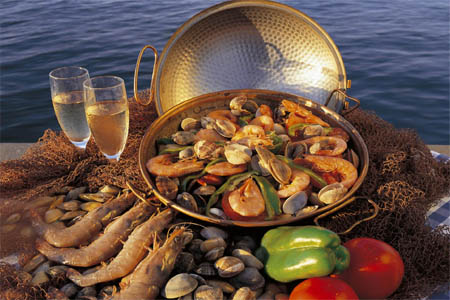 Chinese cuisine has been adapted by a number of places in the world. These places have all developed their own versions of the cuisine. You’ll find that the cuisine has evolved into American chinese cuisine as well as Indian chinese cuisine which a great examples.
Chinese cuisine has been adapted by a number of places in the world. These places have all developed their own versions of the cuisine. You’ll find that the cuisine has evolved into American chinese cuisine as well as Indian chinese cuisine which a great examples.Rice is one of the major food sources in China. Noodles, too is something we all associate highly with China. Noodles have a symbolic meaning in China – The long length are supposed to signify the a long and healthy life. They come in different textures and shapes and are used as a main course or as fried toppings or put in soups. Tofu, too is seen a lot in Chinese cuisine. It is very versatile and is often used as a meat or cheese substitute. It is affordable too and has high protein content.
Dim Sums or ‘small snacks’ are either fried, steamed or stewed and stuffed with a varitey of things. Most chinese dishes are always paired with tea. China was one of the first places to cultivate and drink tea. There are several categories of tea – green tea being most popular with the Chinese. It is also known for its wonderful health benefits.
The most popular chinese dishes are Kung Pao Chicken – although this dish has been highly americanized, it hails from the Siachun province and is diced chicken with vegetables, peanuts and chili peppers. Spring rolls or egg rolls – these are very popular in India too and are either deep fried or freshly wrapped in rice noodles filled with vegetables and meat. Mushu pork – this is stir fried pork that has been wrapped in pancakes and garnished with hoisin sauce and scallions. Fried rice – this is by far the most popular item on every Chinese restaurant. It was a dish that Chinese housewives traditionally started making from left overs from the previous night and consists of egg, meat and vegetables. Beef with brocolli – this consists of stir fried beef steak with a rich sauce and brocolli. Hot and sour soup –an ever popular starter, is a broth that is a combination of both sweet, salty and sour and lastly Beef fried noodles, which are one of the most popular street food in China. It traditionally consists of pork but is served with beef and chicken too.
SIFIL-ELTIS’ Chinese language bacth starts in less than a month! The 22nd of February. Be different! Have an edge! Go learn a new language! :)















